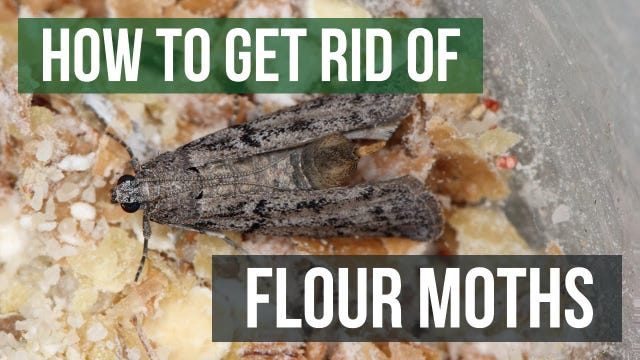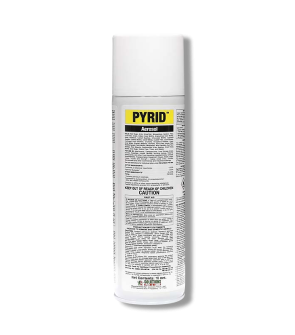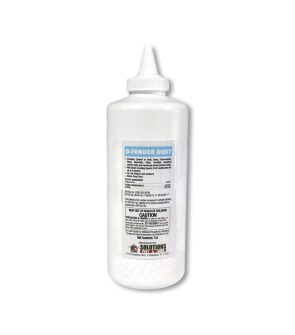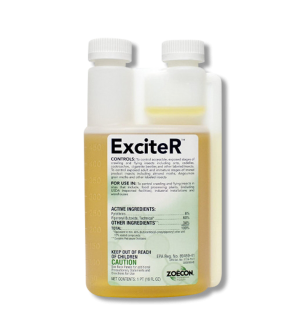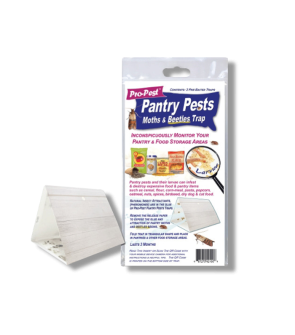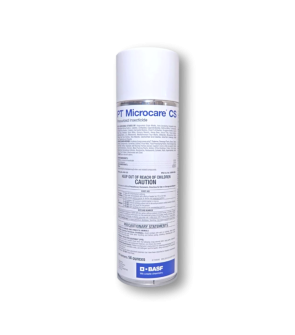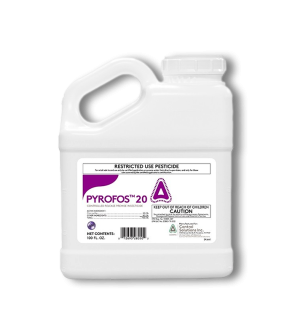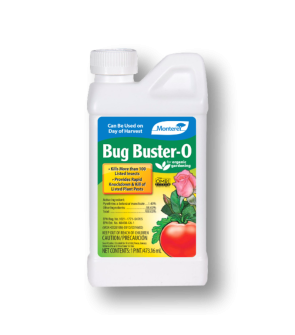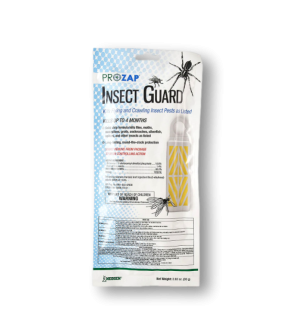Gain access to personalized product screening, the best pricing, rewards, and more!
Most Effective Products
Flour Moth Control: How To Get Rid of Flour Moths
This page is a general flour moth control guide. Using the products and methods suggested, you will get control of flour moths. Follow this guide and use the recommended products, and we guarantee 100% control of flour moths.
Of the many types of pantry pests that can invade stored food products, perhaps none is more common than the flour moth.
Originally known as the Mediterranean flour moth, this pesky pantry pest is also known as the Indian flour moth, mill moth, pantry moth, or simply flour moth.
The flour moth first arrived in the United States in 1889 via trading ships and is now found worldwide. Although its name indicates that it originated from the Mediterranean region, it is believed to have come from Central America.
No matter what region of the world it is originally from, the flour moth can be found in cereal, oatmeal, or other flour—and grain-based foods.
Most of the damage caused by flour moths is in their larvae stage. Once the eggs hatch, the flour moth larvae have a large appetite and devour whatever is around them. In industrial settings and households, large infestations of flour moths can cost a lot of money in terms of food damage.
If you have an infestation of flour moths, there is a way to end their invasion. In the DIY treatment guide below, we will show you how to get rid of flour moths with our helpful advice and professional-grade products that deliver satisfying results.
Identification
Before beginning a treatment program, you must ensure you're dealing with a flour moth. Misidentification can lead to using the wrong treatment methods, which can waste your time and money. Some common characteristics set flour moths apart from other pantry pests.
- Adult male flour moths are about 0.25 to half an inch long and are usually colored a pale-looking gray.
- Flour moths are often confused with the Indian meal moth, but they are a bit larger.
- They have thin antennae and short wingspans of less than an inch.
- Their wings have wave-shaped or zig-zagged stripe patterns on a fuzzy white background and lack feathering.
- When the flour moth is at rest, it extends its forelegs, raises its head, and makes a sloping appearance with its body.
- Flour moth larvae are pinkish or white with dark or brown heads and may have spots.
- Flour moth larvae are voracious eaters that feed and produce webbing until they are ready to pupate.

Use the image and description above to aid you in properly identifying flour moths on your property. If you are unsure, contact us, and we will try to assist you with correct identification.
Inspection
Inspection is crucial for control. Before treating it, you need to know the areas where flour moths are infesting. During the inspection, you will focus on finding "hotspots" where the infestation began.
Where To Inspect
Check the areas where food goods are stored, including the kitchen and garage. Inspect pantries, cabinets, and shelves. Search the packaging of food goods such as grains, cereals, flour, starches, pasta, spices, herbs, pet food, etc.

What To Look For
You're looking for the food item where the infestation began or signs of flour moth activity. This includes looking inside food packaging for larvae, adults, skin shells, weird odors, and webbing. You may also locate pupae shells on shelves or other parts of the home. If you find any packages where moths or larvae are crawling inside, this is where you will apply the treatment.
Treatment
Once you have confirmed flour moth activity, it is time to begin treatment. Remember to read all product labels, follow the application instructions on these labels, and wear personal protective equipment (PPE) to stay safe.
To get rid of flour moths, you must perform a preliminary cleanup of your pantry to locate and remove infested products. Afterward, you can treat with three products: Pyrid, Novacide, and Pro-Pest Pantry Traps.
Step 1: Preliminary Cleanup
Before you can apply the treatment, you need to clean the areas where food goods are stored. In this step, you will throw away every single food item in your pantry and clean the pantries. For this, you will need a vacuum and caulk.
Begin by throwing away every single food item in your cabinet, shelves, or pantry. This may sound excessive, but if you've found one infested package, odds are there are flour moths in your other packaged food. To play it safe, it is best to throw away all the food items.
Once the foods are tossed, take a vacuum and clean the corners, sides, tops, and bottoms of the cabinets, shelves, and pantries where the food goods are stored. Use a toothpick to clean the pegs where the screws go, these areas many times will harbor eggs.
Next, take a cloth soaked in soapy water and clean the insides of your cabinets, shelves, and pantries. Finally, use caulking to seal off and close off cracks and crevices, preventing the infestation from spreading around your home.
Step 2: Treat Cracks and Crevices with Pyrid Aerosol
Pyrid Aerosol is a synthetic pyrethroid insecticide used as a flushing agent and effective as a crack and crevice treatment inside pantries. Flour moths are known to crawl inside small spaces and lay eggs, so applying this will flush them out and kill them with contact.
Pyrid comes with a crack-and-crevice applicator to allow the product to treat cracks and crevices more precisely. To use, remove the white applicator from the top of the can and replace it with the red straw-tip applicator.
Shake the can and then spray in quick bursts along the length of the cracks and crevices of your pantry shelving, usually at about 1 second of spray per foot. Pyrid will flush pests out of these areas. It will not leave behind a residual but will provide an immediate knockdown after flushing invading flour moths.
Step 3: Apply Novacide Aerosol
Novacide is a dual-action insecticide that kills adult flour moths and also comes with an IGR (or Insect Growth Regulator) that prevents the undeveloped stages of flour moths (eggs, pupa, larvae) from turning into adults. The best part about Novacide is its residual effect, as it can remain effective for up to 7 months, so you don't have to apply often.
Novacide Aerosol comes ready to use in an aerosol spray can. Apply the product as a spot treatment. Apply 1 to 2 inches, separated by a couple of inches. Spray the back of shelves along cracks and crevices in short, quick bursts so that a fine mist is applied. Next, spray along the baseboards and flooring of your pantry, kitchen, carpeting, and the baseboards of the areas adjacent to your kitchen in a downward sweeping motion.
Do not allow pets or people to enter treated areas until the product has dried completely.
Step 4: Pro Pest Pantry Moth and Beetle Trap
Finally, you should monitor flour moth activity and capture remaining stragglers using The Pro Pest Pantry Moth and Beetle Trap. This ready-to-use, pesticide-free trap uses a pheromone-scented glue board to lure and capture flour moths.
Peel off the protective paper from the pre-baited glue and fold the trap into a tent shape. Place the trap on shelving where it will not get smashed and is out of the reach of children and pets.
The trap’s pheromone bait attracts flour moths to the trap, where they get stuck in the glue. This is an effective, low-effort tool that will last between 60 and 90 days. One trap will cover around 300 square feet.
Prevention
Once you have successfully treated your pantry and removed the flour moth infestation, You want to ensure you don't have a future problem. Here are some preventative measures we suggest to lower the likelihood of a future flour moth invasion.
- Start by checking every food package before you buy it. Many times, holes or punctured bags indicate that the package is infested.
- Get in the habit of storing all your food goods inside plastic containers. This will make it harder for flour moths to enter the packaging, and it might even isolate an already-infested item and prevent an infestation from spreading.
- Reduce pantry clutter by buying a week's worth of food goods, and do not let food stay stored for months on end undisturbed, as this can open the possibility of an infestation.
- Finally, use Pro-Pest Pantry Traps throughout the year to keep flour moths from infesting your food goods.
Key Takeaways
What are Flour Moths?
- Flour moths are common pantry-invading pests that invade, feed on, and lay eggs in various flour, grain, and food types.
- Their most damaging phase of development is the flour moth larvae phase. These small white eggs attach to whatever food material they are laid in. Once the eggs hatch, white or pink larvae emerge with a dark head and dark spots covering their bodies.
How To Get Rid Of Flour Moths
- To get rid of flour moths, you will need to first locate and remove all infested food items from your pantry and do a thorough cleanup. For best results, it would be wise to empty your entire pantry and discard all items.
- After cleaning, follow up with an application of Novacide Aerosol and Pyrid Aerosol to cracks and crevices and then lay out Pro-Pest Pantry Traps to monitor further activity following the insecticide applications.
Preventing Flour Moth Reinfestation
- Preventative measures, such as reducing clutter, checking newly bought items from the store, and storing food in hard plastic containers, can reduce the likelihood of a future flour moth infestation.
- Apply Novacide Aerosol and Pyrid Aerosol as preventative treatments to stop flour moths and other pantry pest infestations.






